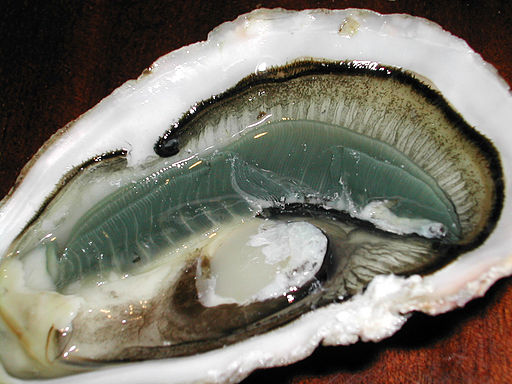1. He really seems to have had some sort of deep-seated fear of the sea life. Most of his monsters live in the sea or have physical characteristics that seem to be inspired by sea creatures. Cthulhu and Dagon may be the most "human-like" of his monsters, but Cthulhu has tentacles and Dagon is explicitly "half-fish". The "Old Ones" of The Mountains of Madness sound basically like sea cucumbers stood upright and provided with wings and (again) tentacles, and the shoggoth sound vaguely like box jellies -- which, oddly enough, have true eyes.

Most people, however, would not react in a Lovecraftian way. We may fear jellyfish, but only because they may sting us; we are not driven insane by the mere fact of their existence. If we could go back in time a half billion years, we would find creatures in the sea that would look to anyone but a specialist like some of the jellyfish found today -- but this inspires only mild curiosity, not existential despair.
2. In addition to his odd hang-up with sea life, Lovecraft seems to have been completely unaware of what really does make for an unsettling image. Of course, he can't really be blamed for not having a fully developed idea of the "Uncanny Valley", but even before that name was coined many artists and writers had a strong intuitive feel for it.
So, for example, look at these dolls. They're pretty, charming, and, at least to me, kind of creepy.

Storytellers have known this for years; it's why there are so many stories about haunted dolls, some of which are claimed to be true. No, I am not saying that these claims really are true, but the fact that they can be presented as such with the expectation that they will be believed and the fact that they in fact are accepted by a number of people are indications that these are touching on something in our common psychological make-up. No doubt magical dolls, like the ones famous from Voodoo, have a similar origin.
So what kind of monsters does Lovecraft give us? Are they soulless parodies of human beings? Are they manlike enough to make us first think they really are human, only some indefinable property is vaguely wrong, hinting that the spirit animating them is not, after all, human? Nope; they're more likely to be colossal (and aeons-old!) shucked oysters, with all their sliminess and seeming formlessness, or perhaps a scallop without its shell, as implied by the presence of odd eyes.

A real monster shouldn't make you think, "That wouldn't be bad fried and served with sides of cole slaw and cheese grits."

Those dolls are creepy.
ReplyDelete